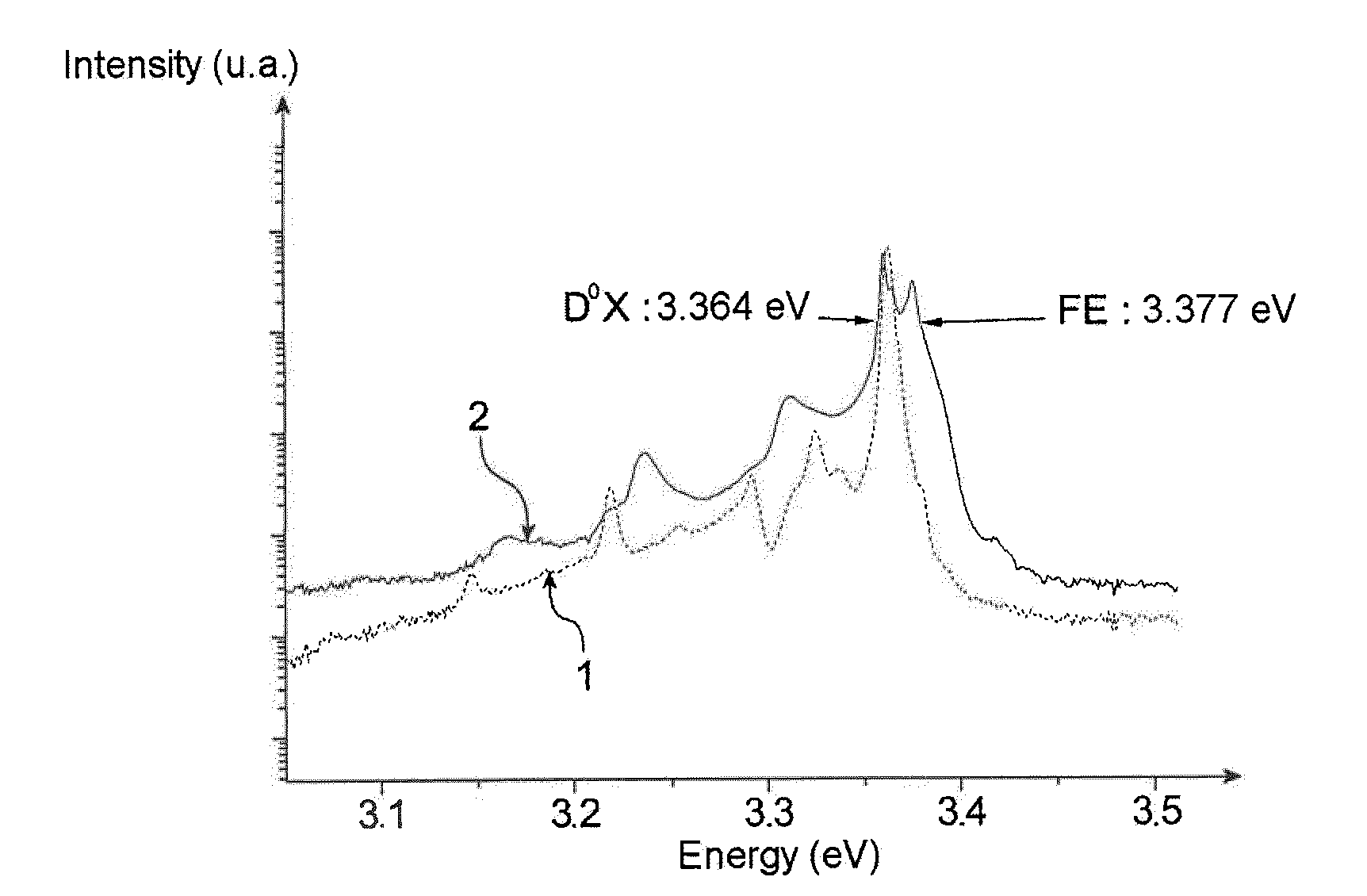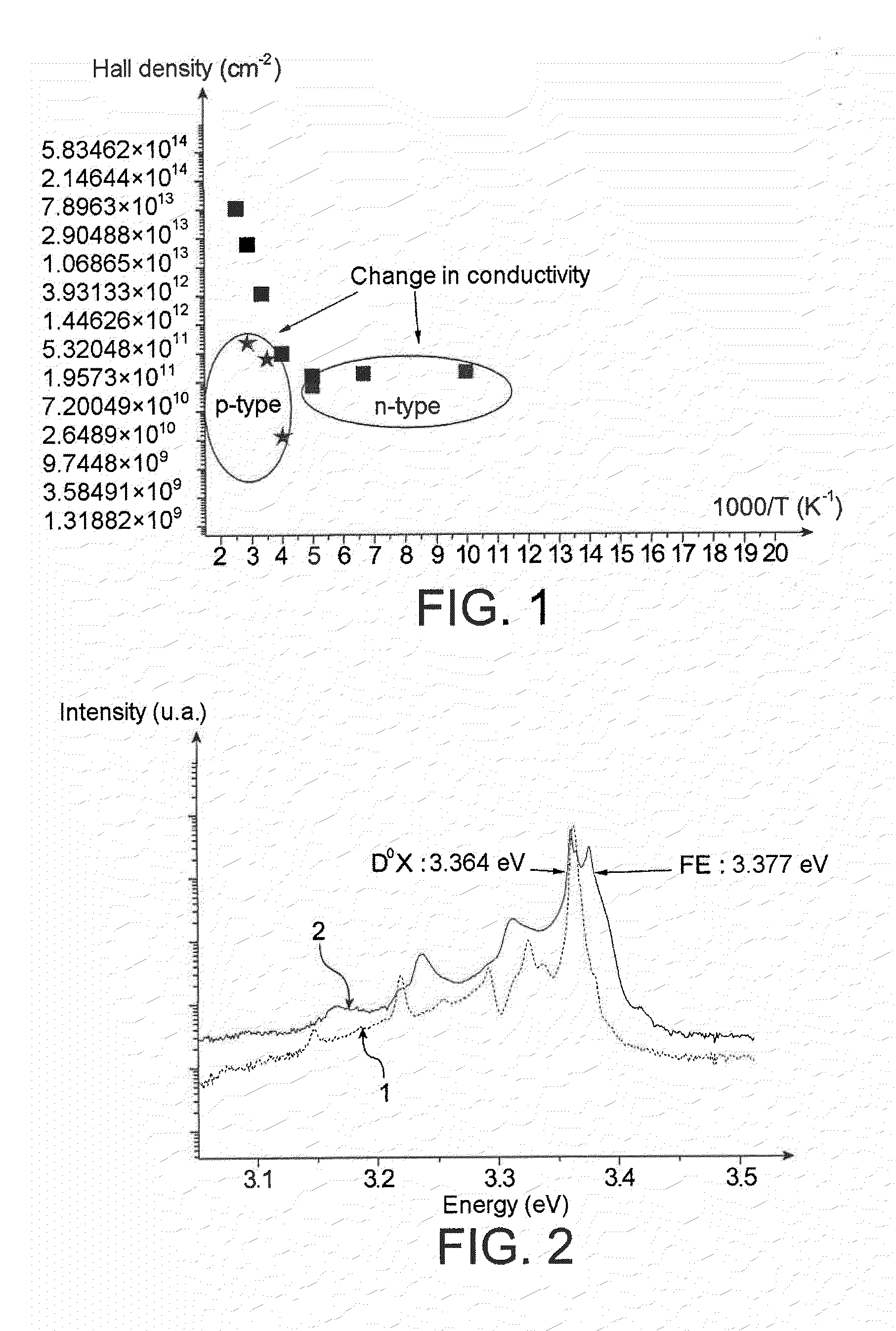Method of Producing a Partly or Completely Semi-Insulating or P-Type Doped ZnO Substrate, Substrates Obtained, and Electronic, Electro-Optic or Optoelectronic Devices Comprising Them
a technology of semi-insulating or substrates, which is applied in the direction of basic electric elements, electrical apparatus, crystal growth processes, etc., can solve the problems of affecting the efficiency of diodes, method has yet to be optimized, and it is extremely difficult to produce p-type doped zno substrates
- Summary
- Abstract
- Description
- Claims
- Application Information
AI Technical Summary
Benefits of technology
Problems solved by technology
Method used
Image
Examples
example 1
[0106]200 g of high-purity lithium nitrate were placed in a quartz crucible.
[0107]The whole assembly was placed in a vertical furnace, the temperature of which was computer-controlled. The temperature of the crucible was controlled by a thermocouple. The temperature of the crucible and that of the molten salt bath were the same.
[0108]The temperature of the crucible was raised to 500° C., the lithium nitrate melting from 264° C. on and then remaining liquid. The 500° C. temperature was kept constant for a time of 24 hours so as to ensure that the lithium nitrate was anhydrous.
[0109]A ZnO substrate (initial substrate) with a natural n-type conductivity (square substrate measuring 10×10 mm2, with a thickness of about 500 μm and a mass of 0.0655 g, of commercial type) was placed on a substrate holder subjected to a translational movement so that the substrate could be immersed in the liquid for the chosen time, in this example for 5 hours.
[0110]The temperature of the molten salt was con...
PUM
 Login to View More
Login to View More Abstract
Description
Claims
Application Information
 Login to View More
Login to View More - R&D
- Intellectual Property
- Life Sciences
- Materials
- Tech Scout
- Unparalleled Data Quality
- Higher Quality Content
- 60% Fewer Hallucinations
Browse by: Latest US Patents, China's latest patents, Technical Efficacy Thesaurus, Application Domain, Technology Topic, Popular Technical Reports.
© 2025 PatSnap. All rights reserved.Legal|Privacy policy|Modern Slavery Act Transparency Statement|Sitemap|About US| Contact US: help@patsnap.com


